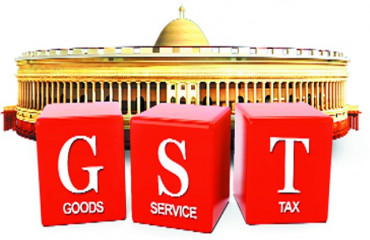
In a year of global elections, all eyes are on India. A lot has been written about the hopes and expectations of the new government. It is now time to set the trajectory for the next five years. The last decade was marked by a series of reforms and economic setbacks from covid-19. As the new government sets its eye on the future, its economic legacy must shape fiscal policy thinking.
In a year of global elections, all eyes are on India. A lot has been written about the hopes and expectations of the new government. It is now time to set the trajectory for the next five years. The last decade was marked by a series of reforms and economic setbacks from covid-19. As the new government sets its eye on the future, its economic legacy must shape fiscal policy thinking.
The most significant shift in the policy landscape was the introduction of the goods and services tax. The regime has settled as revenue collections have been robust, increasing by the year. This, along with the upward trend in e-way bills and registrations, indicates a degree of formalization of the economy. It may now be time to consider whether the elasticities of demand for products warrant a rejig of GST rates.
Despite the pandemic years, direct tax collections have also been impressive. In FY23, collections increased 17.7%, reinforcing trends observed for GST. The growth in revenue has been accompanied by a rise in the number of income tax payers and returns filed. In FY23 74 million individuals and entities filed returns, a 65% jump from FY17. Compositionally, business incomes that were impacted by covid-19 rebounded in the subsequent years and stood at 57.4% of gross total income reported in tax returns in Assessment Year 2021-22.
Also Read: Lok Sabha Election Results 2024: 5 crucial things that helped INDIA bloc hold NDA under 300 seats
The structure of income tax rates too is stabilizing as more and more taxpayers opt for the new regime with limited exemptions. While the simplification of corporate taxes has been welcomed by companies, the lower rates in 2019 did not quite boost private investment. In fact, the ratio of corporate investments to their net income has been declining since FY21. Therefore, a conundrum that remains for tax policy is the future trajectory of tax rates. The government has also tried to ease confrontation between the tax department and taxpayers. Consequently, the revenues under dispute have declined overall but not for corporate taxes. Therefore, there remains some scope for reforms in corporate taxes so as to minimize disputes and bolster investments.
Though these reforms have contributed to a higher tax to GDP ratio, experts ponder over whether this is enough. Keeping aside the imprecise comparisons with developed countries, a roadmap is necessary for thinking about the ideal tax to GDP for India given its economic structure. As India grapples with inequality and lacklustre demand a bigger question looms -- what will be the future of taxes in India?
Public debates on capital gains reform, inheritance or wealth tax and tax increases have gathered momentum but there are no easy answers. All such taxes are inter-linked and must be understood in the context of their revenue generation capacity and wider impact on the economy.
Wealth tax in India, for example, was repealed due to insubstantial revenues. Changes to capital gains tax can only be pursued conscious of the impact this would have on financial markets. A rationalization of rates across asset classes is one possible way but with less than 10% of reported incomes in returns at capital gains, the fiscal impact of the reform needs to be studied.
In the 1990s policy shifts were informed by the need for foreign capital inflows; a similar overarching macroeconomic priority such as employment generating private investment is required to inform policy.
It is perhaps time to create a guidebook for the future of tax reforms by a committee dedicated to direct taxes. This is particularly important given that fiscal consolidation is key. In the equation are also sub-national governments that now look to 16th finance commission for their fiscal future. The need for revenue augmentation is also critical for states, while thinking of innovative ways of financing projects that are aligned with energy transition and infrastructure development.
As world markets cope with uncertainties of war, inflation, oil politics and growth, the next decade for India will be informed by such uncertainties. India has remained a bright spot amidst sombre global growth. To set India on a higher growth path a medium-term fiscal strategy that includes taxes needs to be laid out.
